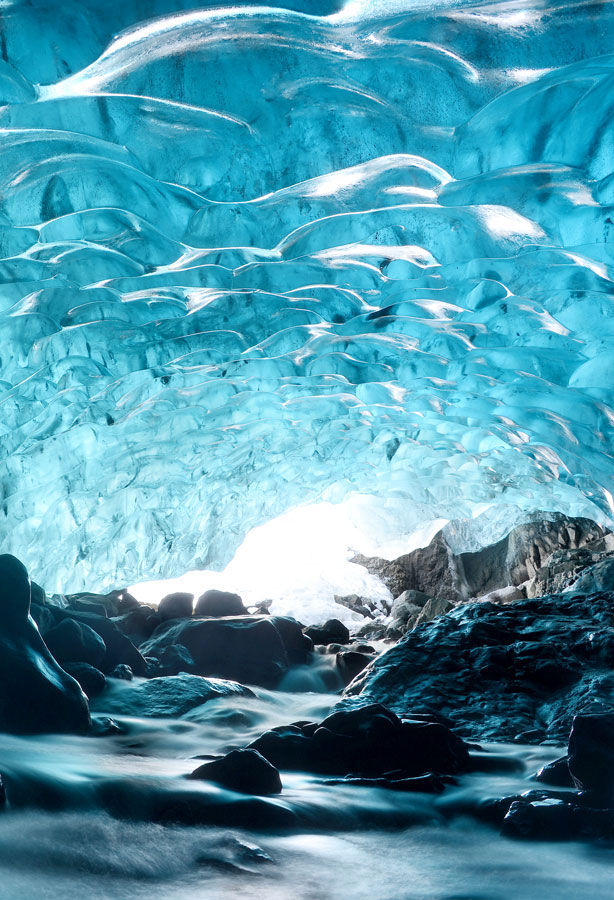Glaciers are not only some of Earth’s most stunning landforms — these rivers of ice also store nearly 70% of the planet’s freshwater. Sadly, many glaciers are melting and all but disappearing in recent years as the planet warms. So while a trip through a glacier’s crevasse-filled terrain can be a stunning experience, the fragile, vanishing beauty of these icy landscapes also serves as an eye-opening reminder for tourists to tread lightly and thoughtfully as they travel. Here are eight epic, easy-to-access glaciers to explore around the world.
Hubbard Glacier – Alaska
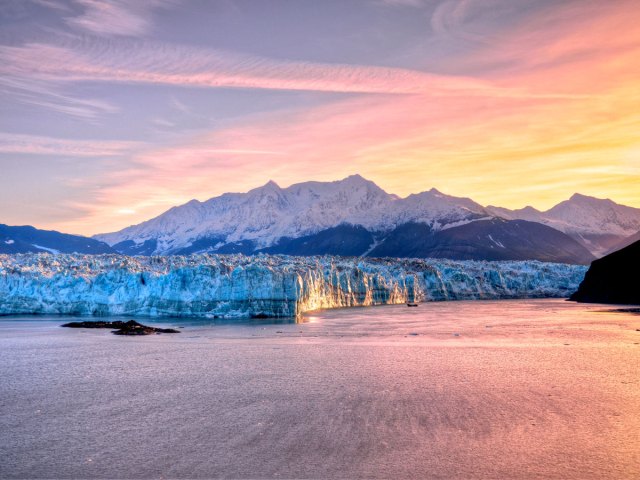
Alaska contains more glacial ice than any other state. Located 200 miles from Juneau, Hubbard Glacier begins on Mount Logan and flows for over 75 miles. At its juncture with the sea, its giant face measures six miles wide, making this magnificent force of nature the longest tidewater glacier in North America. When it calves, unleashing enormous ice blocks tumbling into the sea, the loud groaning and booming sounds that erupt create a musical soundtrack that the Indigenous Tlingit peoples refer to as “white thunder.” To catch a glimpse of this frequent spectacle, you’ll need to either float or fly. But as several popular cruise ship companies include the Hubbard glacier on their Alaska itineraries, this glacier has become a popular tourist destination despite its remote location.
Mer de Glace – France

Mer de Glace — with a name that translates to “sea of ice” — is perhaps the most impressive glacier in France. Running over four miles long and reaching more than 650 feet deep, it is also one of the most accessible glaciers in Europe. Some people choose to visit for just a few hours, but you also can opt to spend days hiking over this frozen river across the neighboring Leschaux, Tacul, and Talèfre glaciers to discover even more icy terrain. A historic train ride up from the village of Chamonix delivers hikers to Montenvers, with its spectacular views of the Mont Blanc peak. Trails that lead right into deep blue ice caves at the heart of the glacier are located just a gondola ride away, or an easy 20-minute walk from town.
Sólheimajökull – Iceland
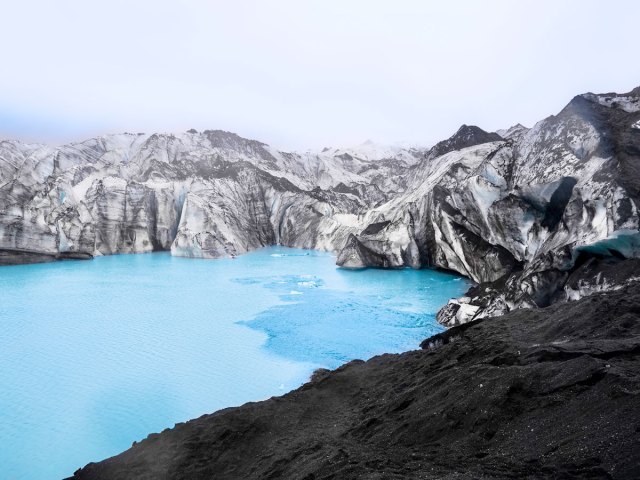
About 85 miles fromthe capital city of Reykjavik, the Sólheimajökull glacier, a branch of the super-sized, almost iridescent blue Mýrdalsjökull ice field, is one of the most accessible in Iceland. Stretching between two volcanoes, the glacier is surrounded by picturesque trails and roads that traverse miles of waterfalls, rivers, and ash mountains, with plenty of options for trekkers of all skill levels. Book a local guided tour to experience walking on the glacier safely for an unforgettable experience in one of the world’s most unique environments.
Athabasca Glacier – Canada
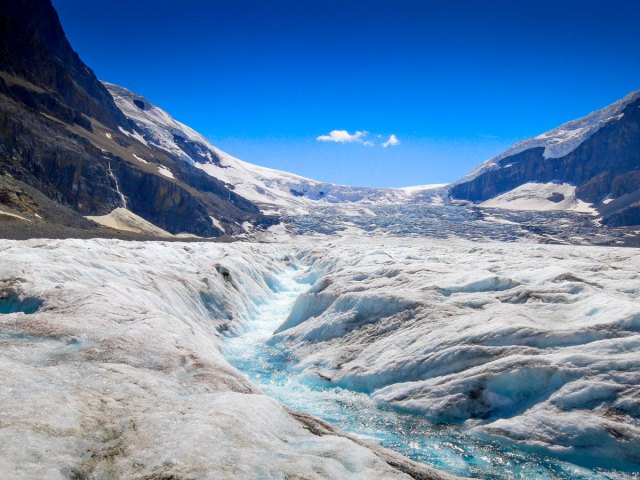
Located in the massive Columbia ice field and relatively easy to access, British Columbia’s Athabasca Glacier showcases a range of stunning icy scenery, from tall shelves to deep crevasses and steep icefalls. The Ice Explorer snow coach offers an exertion-free journey right up onto the glacier, for those less inclined to brave these slippery slopes on foot with a guided tour. No matter how you get there, don’t miss the glass-bottomed Skywalk, which provides an ideal viewing platform for this shifting icy expanse.
Perito Moreno – Argentina
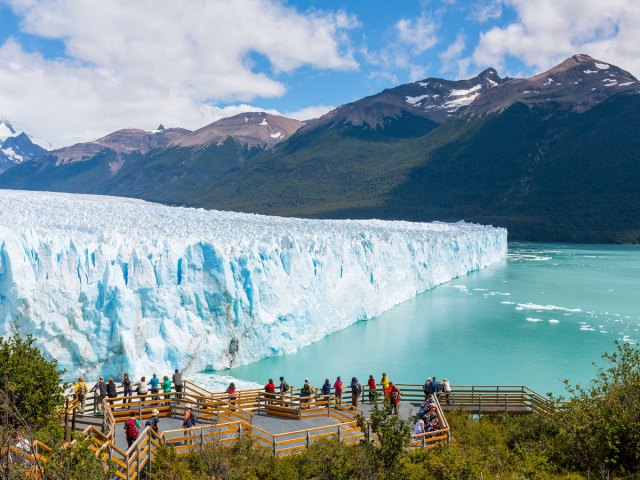
One of South America’s most remarkable landscapes, the magnificent Perito Moreno Glacier rises over 200 feet above Lago Argentino in southern Patagonia’s Los Glaciares National Park. There are several easily accessible trails and guided tours run by local experts available to lead trekkers to the glacier safely. It’s hard to imagine ever tiring of the majestic views of these towering walls of ice, the countless ice caves, and the surrounding pristine blue lagoon.
Aletsch Glacier – Switzerland
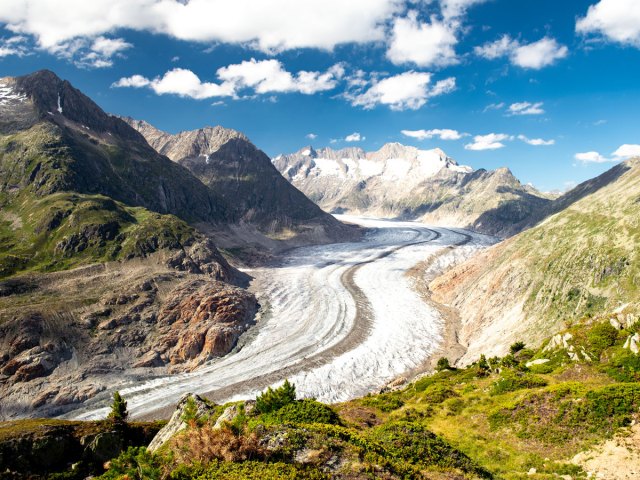
Cascading down from the towering Swiss Alps and surrounded by a protected, dense evergreen forest, the Aletsch glacier is the largest in this mountain range, flowing for more than 14 miles. Along with Jungfrau and Eiger mountains, the glacier forms part of the famed Jungfrau-Aletsch UNESCO World Heritage Site. Accessible via cable car, the Bettmerhorn peak offers breathtaking views and a glacier museum with a permanent, free exhibit on this ice giant. An “ice terrace” can be reached by a short walk from the cable car terminal, and provides spectacular panoramic views of the area (though it’s closed in winter). In summer, scenic hiking trails shared by deer and mountain goats lure visitors with close-up views of the glacier from several angles.
Vatnajokull – Iceland
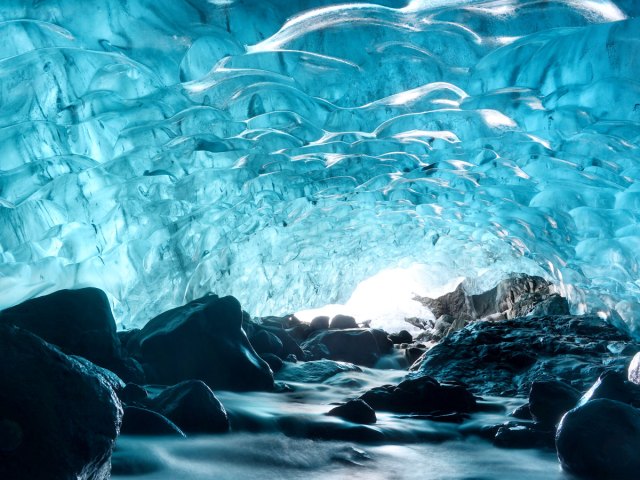
One of the largest glaciers in Europe, Vatnajokull dominates an astounding 8% of Iceland’s surface area. It feeds into the Jökulsárlón ice lagoon, full of floating icebergs and worth a trip of its own for its haunting beauty. Accessible via hiking trails within the Vatnajokull National Park, where year-round camping is permitted, the journey up to this glacier makes a perfect day trip or family outing. The setting here is both breathtaking and otherworldly, with hot springs, active volcanoes, and ice caves of all shapes and sizes. Guided tours are readily available, and the park’s visitor center has detailed information on trails, the important natural history of the area, and seasonal activities, as well as an exhibit on glaciers and volcanoes in the area, and their effects on local settlers and the environment.
Narsarsuaq and Ilulissat – Greenland
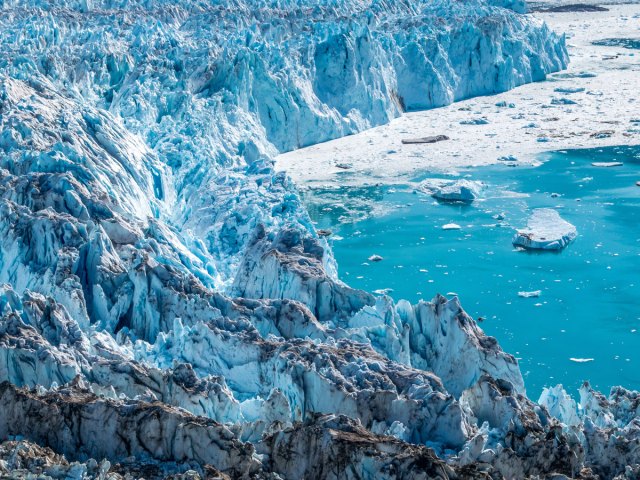
Greenland is home to the second-largest ice sheet in the world and dozens of impressive glaciers. Two of the most accessible places to explore are just outside the airport town of Narsarsuaq — where you can reach the glacier of the same name via a long but scenic hike through the colorful Flower Valley — and further north, in the town of Ilulissat. Here, at the UNESCO World Heritage Site of the Jakobshavn glacier (also known as the Ilulissat glacier), visitors can explore the frozen river that calved the fateful Titanic iceberg.
Tours are available on foot, by boat, or by air. Although this highly dynamic glacier was the country’s fastest moving and fastest thinning until recently, there’s been a sudden shift since 2016, and NASA imaging points to three years of consecutive expansion since then. Given the punishing winter weather conditions, summer is the ideal time to book a trip to this once-in-a-lifetime destination.
More from our network
Daily Passport is part of Optimism, which publishes content that uplifts, informs, and inspires.






